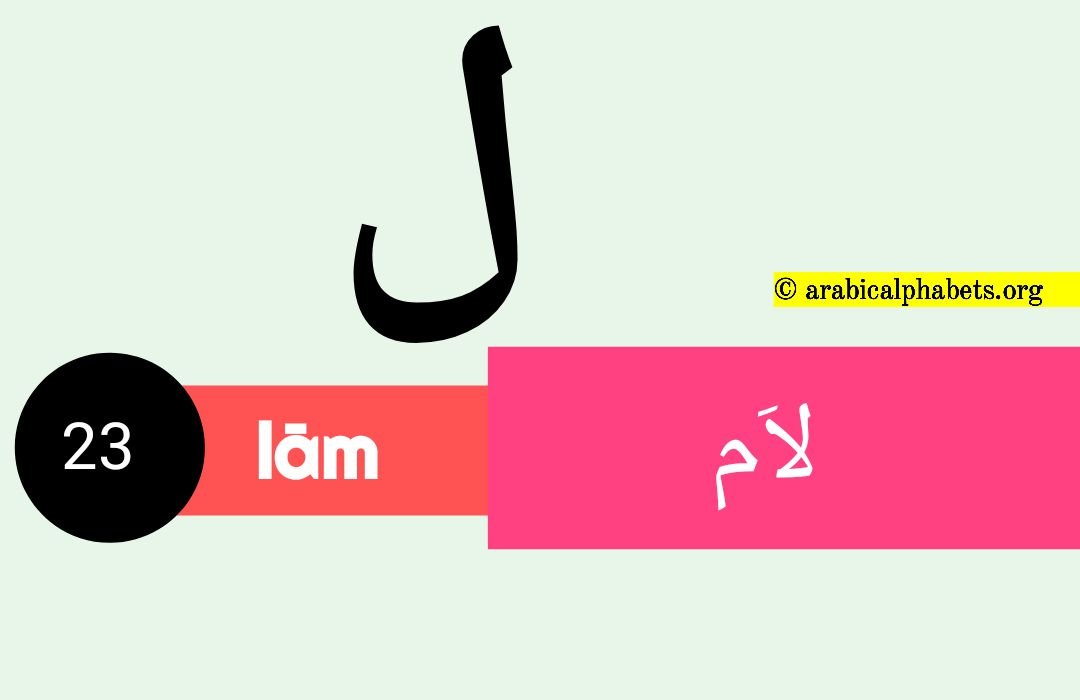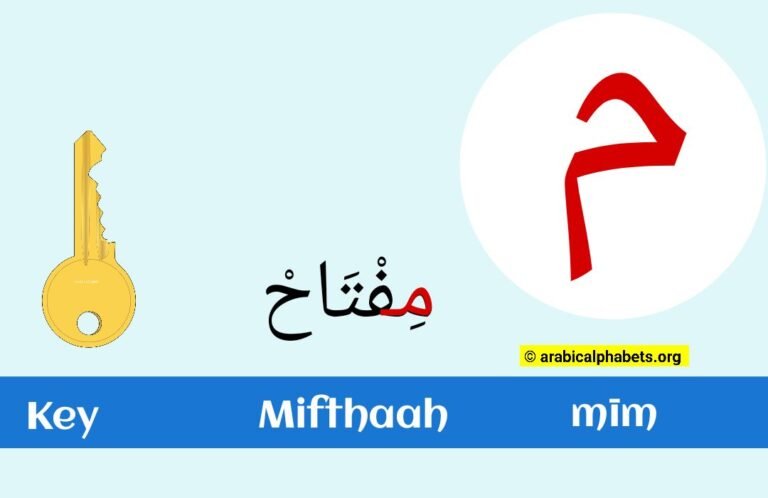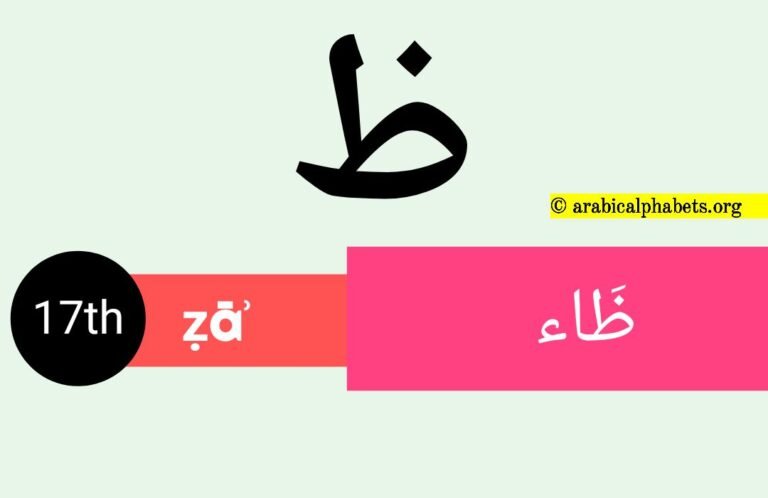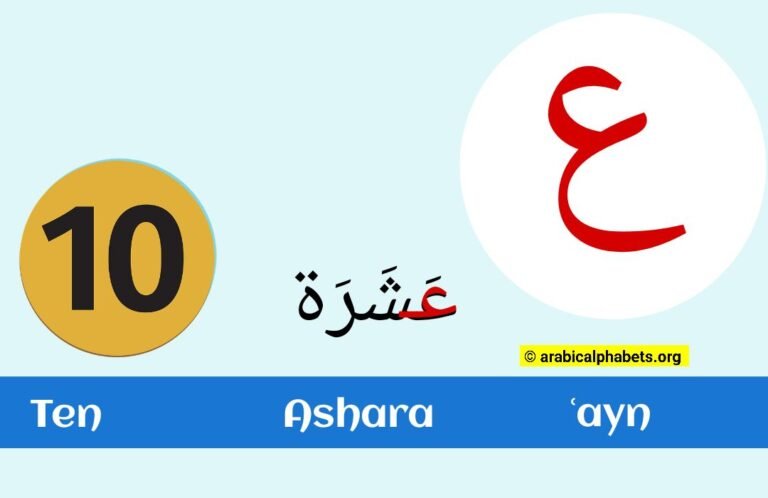Twenty-third Arabic Alphabet Letter
In the vast and intricate world of languages, Arabic is one of the most captivating and enigmatic. Its rich history and complex script have fascinated linguists and curious minds for centuries.
Yet, hidden within its 28 letters lies a mysterious character that often eludes even the most dedicated seekers: the elusive 23rd letter.
Known by many as the lost letter, this symbol has become an object of fascination, sparking debates among scholars and enthusiasts alike. Join us on a journey to unravel this linguistic enigma and discover why finding the 23rd letter is an intriguing quest that continues to captivate language lovers around the globe.
Twenty-third Arabic Alphabet Letter Full Details Here
Table Description -> A – Serial Number, B – Isolated Form, C – Trans-literation, D – Letter name, E – Letter Name In Arabic Script.
| A | B | C | D | E |
|---|---|---|---|---|
| 23 | ل | l | lām | لاَم |
Welcome to a comprehensive exploration of the twenty-third letter of the Arabic alphabet, “Lām” (ل). In this guide, we will delve into its pronunciation, written form, significance in word construction, and cultural connections within the Arabic language. Let’s embark on a journey to uncover the essence of “Lām”:
1. Introduction to “Lām” (ل):
The letter “Lām” holds the twenty-third place in the Arabic alphabet and is crucial in enriching the language.
2. Pronunciation Mastery:
Master the accurate pronunciation of “Lām,” producing a soft “l” sound that distinguishes it from other letters.
3. Written Form of “Lām” (ل):
Appreciate the elegance of the written form of “Lām,” resembling a graceful curve that contributes to the beauty of Arabic script.
4. Role in Word Formation:
Explore how “Lām” forms words, combining them with other letters to create a meaningful vocabulary.
5. Vocabulary Enrichment:
Discover words containing “Lām,” such as “لغة” (language), “لون” (color), and “ليل” (night), broadening your Arabic lexicon.
6. Impact on Arabic Grammar:
Understand the grammatical significance of “Lām” in sentence structures, verb conjugations, and noun-adjective agreements.
7. Cultural Expressions and Nuances:
Delve into the cultural context of “Lām” within Arabic expressions, idiomatic phrases, and colloquial language, reflecting the linguistic nuances of the region.
8. Calligraphic Beauty:
Witness “Lām” in Arabic calligraphy, whose distinct form lends itself to artistic interpretations across various calligraphic styles.
9. Writing Proficiency:
Practice writing “Lām” in isolation and within words, refining your handwriting skills to ensure accurate replication of its form.
10. Memorization Strategies:
Employ mnemonic devices to aid in memorizing the letter “Lām.” Create associations that enhance your ability to recall its form and pronunciation.
11. Bridging to Reading:
Witness how “Lām” combines with other letters to create words—progress in your reading journey by recognizing it in various contexts.
12. Continuation of Learning Path:
Discover the logical next steps in your Arabic learning journey after mastering “Lām,” including advancing to more complex language skills.
13. Cultural Enrichment:
By mastering “Lām,” you’re immersing yourself in the culture and heritage of Arabic-speaking communities, gaining a deeper connection to their expressions.
14. Practical Application:
Equip yourself with foundational skills to engage confidently in reading, writing, and conversing using “Lām” and other Arabic letters.
Uncover the essence of the Arabic letter “Lām” (ل) as you embark on this enlightening journey. Each letter you master brings you closer to effective communication and a profound understanding of the Arabic language’s depth and elegance
Get 1 to 28 Arabic Letters Order
Table Description -> A – Serial Number, B – Isolated Form, C – Trans-literation, D – Letter name, E – Letter Name In Arabic Script.
| A | B | C | D | E |
|---|---|---|---|---|
| 1 | ا | ā | ʾalif | أَلِف |
| 2 | ب | b | bāʾ | بَاء |
| 3 | ت | t | tāʾ | تَاء |
| 4 | ث | th | thāʾ | ثَاء |
| 5 | ج | j | jīm | جِيم |
| 6 | ح | ḥ | ḥāʾ | حَاء |
| 7 | خ | kh | khāʾ | خَاء |
| 8 | د | d | dāl | دَال |
| 9 | ذ | dh | dhāl | ذَال |
| 10 | ر | r | rāʾ | رَاء |
| 11 | ز | z | zāy | زَاي |
| 12 | س | s | sīn | سِين |
| 13 | ش | sh | shīn | شِين |
| 14 | ص | ṣ | ṣād | صَاد |
| 15 | ض | ḍ | ḍād | ضَاد |
| 16 | ط | ṭ | ṭāʾ | طَاء |
| 17 | ظ | ẓ | ẓāʾ | ظَاء |
| 18 | ع | ʿ | ayn | عَيْن |
| 19 | غ | gh | ghayn | غَيْن |
| 20 | ف | f | fāʾ | فَاء |
| 21 | ق | q | qāf | قَاف |
| 22 | ك | k | kāf | كَاف |
| 23 | ل | l | lām | لاَم |
| 24 | م | m | mīm | مِيم |
| 25 | ن | n | nūn | نُون |
| 26 | ه | h | hāʾ | هَاء |
| 27 | و | w | wāw | وَاو |
| 28 | ي | y | yāʾ | يَاء |
The Art of Learning Arabic Letters: Techniques for Rapid Alphabet Acquisition
Welcome to “The Art of Learning Arabic Letters: Techniques for Rapid Alphabet Acquisition.” This guide is your portal to mastering the Arabic alphabet through expert techniques that enable swift and effective letter comprehension. Let’s delve into the comprehensive details of this enriching journey:
1. The Intrigue of Arabic Letters:
Discover the allure of Arabic letters as the building blocks of the language, each holding its unique sound and form.
2. Progressive Learning Techniques:
Embark on a journey of step-by-step progression, utilizing expert techniques that expedite your mastery of Arabic letters.
3. Pronunciation Precision:
Uncover the secrets of accurate Arabic letter pronunciation, guided by expert explanations and auditory resources.
4. Visual Mastery of Letter Forms:
Develop a keen eye for recognizing and differentiating the visual variations of Arabic letters in different positions within words.
5. Crafting Vocabulary:
Immerse yourself in Arabic vocabulary by exploring words that feature each letter, cultivating a rich linguistic repertoire.
6. Imbibing Cultural Nuances:
Understand how each letter resonates with the cultural heritage of Arabic-speaking communities, adding depth to your language experience.
7. Fluid Handwriting Skills:
Practice the art of writing each letter, refining your penmanship to produce a clear and elegant Arabic script.
8. Memory Techniques and Mnemonics:
Harness mnemonic devices and memory techniques to accelerate memorizing Arabic letters, making learning enjoyable.
9. Constructing Basic Words:
Experience the gratification of forming basic words by combining letters, bridging the gap between isolated letters and practical language usage.
10. Engaging Learning Activities:
Participate in interactive exercises and activities reinforcing your ability to recognize, pronounce, and use Arabic letters.
11. Visual Aids and Resources:
Utilize visual aids, charts, diagrams, and downloadable resources to cater to various learning styles, facilitating swift alphabet acquisition.
12. Beyond Letters: Progressing Proficiency:
Explore the next steps after mastering Arabic letters, from advancing to more complex language skills to exploring dialects and specialized fields.
13. Immersion in Cultural Heritage:
By embracing the art of Arabic letter learning, you’re delving into Arabic-speaking communities’ cultural and linguistic heritage.
14. Practical Application and Language Fluency:
Empower yourself with foundational skills to confidently read, write, and communicate using Arabic letters.
Embark on the artful journey of mastering Arabic letters with dedication and enthusiasm. As you delve into each letter’s intricacies, you’re unlocking the door to effective communication and a profound connection to the richness of the Arabic language and culture.
Conclusion Points
In conclusion, our comprehensive exploration of the twenty-third Arabic alphabet letter, “Lām” (ل), has unveiled its significance within the intricate tapestry of the Arabic language. Through a deep dive into its pronunciation, written form, grammatical role, and cultural connections, we’ve gained a profound appreciation for how ” Lām ” shapes Arabic communication.
As you continue learning Arabic, remember that each letter, including “Lām,” carries its unique value and enriches your linguistic abilities. Embrace the elegance of “Lām” as it connects you to cultural expressions, regional nuances, and the broader Arabic-speaking world. With every letter you master, you’re taking confident strides toward effective communication and a more profound understanding of the richness of the Arabic language.
Ten frequently asked questions (FAQs) about the twenty-third Arabic alphabet letter, “Lām” (ل):
Where does “Lām” (ل) stand in the Arabic alphabet?
“Lām” is the twenty-third letter in the Arabic alphabet.
How is “Lām” (ل) pronounced?
“Lām” is pronounced as a soft “l” sound, similar to the English “l.”
What does the written form of “Lām” (ل) look like?
The written form of “Lām” resembles a graceful curve, adding to the aesthetic of Arabic script.
How does “Lām” (ل) contribute to word formation?
“Lām” combines with other letters to create words, pivotal in constructing meaningful vocabulary.
Can you provide examples of words containing “Lām” (ل)?
Certainly! Examples include “لغة” (language), “لون” (color), and “ليل” (night).
How does “Lām” (ل) impact Arabic grammar?
“Lām” has grammatical significance, influencing sentence structures, verb conjugations, and noun-adjective agreements.
What cultural nuances are associated with “Lām” (ل)?
Explore the cultural context of “Lām” within expressions, idiomatic phrases, and colloquial language, reflecting regional nuances.
Is “Lām” (ل) used in Arabic calligraphy?
Its distinctive form makes “Lām” a common choice for artistic representation in Arabic calligraphy.
How can I practice writing and recognizing “Lām” (ل)?
Regular writing practice, both in isolation and within words, will help you recognize and reproduce the letter accurately.
After mastering “Lām” (ل) in my Arabic learning journey, what’s the next step?
With “Lām” mastered, you’re well-equipped to advance in reading, writing, and exploring more complex language skills.
These FAQs provide valuable insights into the Arabic letter “Lām.” By understanding its nuances, you’re well on your way to unlocking the intricacies of Arabic language and culture






